Glaoch ón Tríú Reich (‘A call from the Third Reich’)
Published in 20th-century / Contemporary History, General, Issue 1(Jan/Feb 2013), Reviews, The Emergency, Volume 21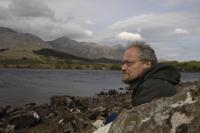
Dr Arndt Wigger, a former student of Dr Hans Hartmann, at Lough Inagh, Connemara. The desolate and breathtaking landscapes belie the deadly subject-matter. (Mind The Gap Films)
The noted linguist, Celtic studies expert and Nazi propagandist Dr Hans Hartmann has been enjoying something of a revival recently. First he had a starring role, albeit dramatised, in Desmond Bell’s film The enigma of Frank Ryan. This depicted Hartmann interviewing Ryan about his IRA role in wartime Berlin, something that never actually happened, although the German linguist did try to lure the IRA man to work for his radio propaganda unit in Luxembourg in 1944 (the service moved from Berlin in 1943 to avoid increasing Allied bombing). Ryan was keen to go but his health gave out and he died in Germany the following year.
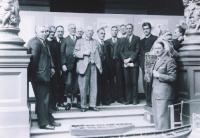
Hans Hartmann (sixth from left) at a meeting of the Irish Folklore Commission in the National Museum of Ireland in 1937. Museum director (and Dublin’s Nazi Party leader) Adolf Mahr is fourth from the left. (Dept of Folklore, UCD)
But such a direct approach to finding out what made Hartmann tick would perhaps have spoiled Wigger’s long and winding odyssey through the Celtic mists of time, as he drifts relentlessly towards the inevitable denouement, which hits him like a sledgehammer. If this were a silent movie it could double as a promo for Fáilte Ireland. But the desolate and breathtaking landscapes of Donegal and Connemara belie the deadly subject-matter. Whatever way you look at it, Nazi propaganda—as it sought to convince a wary world of Hitler’s New Order—is not an easy or palatable subject. Nor is it for the fainthearted.
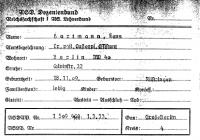
A simple trip to the Bundesarchiv in Berlin could have uncovered Hartmann’s Nazi Party card and the fact that his NSDAP membership dated from 1 March 1933, just a month after Hitler became German chancellor. (Bundesarchiv, Berlin)
One of the most moving parts of this documentary is when Wigger (who was born in 1943) speaks about his own background and his memories of sheltering with his mother as the Allies bombed their home city of Hamburg. His father was imprisoned for helping a Jew to escape to England, but was released when he agreed to join the army. The estrangement of father and son during the war seems to have had a lasting effect. And in pondering Hartmann’s motives for doing the radio work, Wigger admits that he might have done the same, if only to save himself and his family from danger.
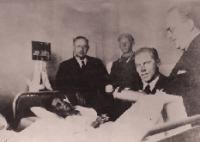
Hans Hartmann (standing, left) interviewing POW Larry Slattery from Thurles in a Berlin hospital. Slattery’s RAF plane was shot down while dropping leaflets over Germany on 4 September 1939. (Irish Military Archives)
Hartmann enjoined his Irish listeners to ‘Coinnígí bhur neodracht’ (‘Keep your neutrality’), explaining to me that ‘It was a part of the war aims . . . when de Valera declared his neutrality, Hitler said to himself that that was the best thing for him too . . . Irish neutrality was really one of the objectives which was in conformity with German policies’.
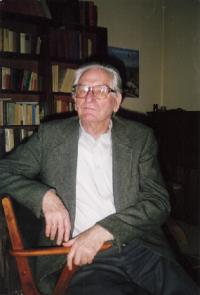
Hans Hartmann at home in Cologne in 1990, aged 81.
Faced with the irrefutable evidence, Wigger concedes that had he known about Hartmann’s Nazi past when attending his lectures in the 1960s he ‘would have left him immediately’. Chameleon-like, Hartmann managed to reinvent himself in the post-war period, visiting Connemara in the mid-1960s with UCD’s professor of Irish, Tomás de Bhaldraithe, to record local dialects. It is a salutary lesson in how someone, as Wigger puts it, ‘can hide their true self like that’. HI
















